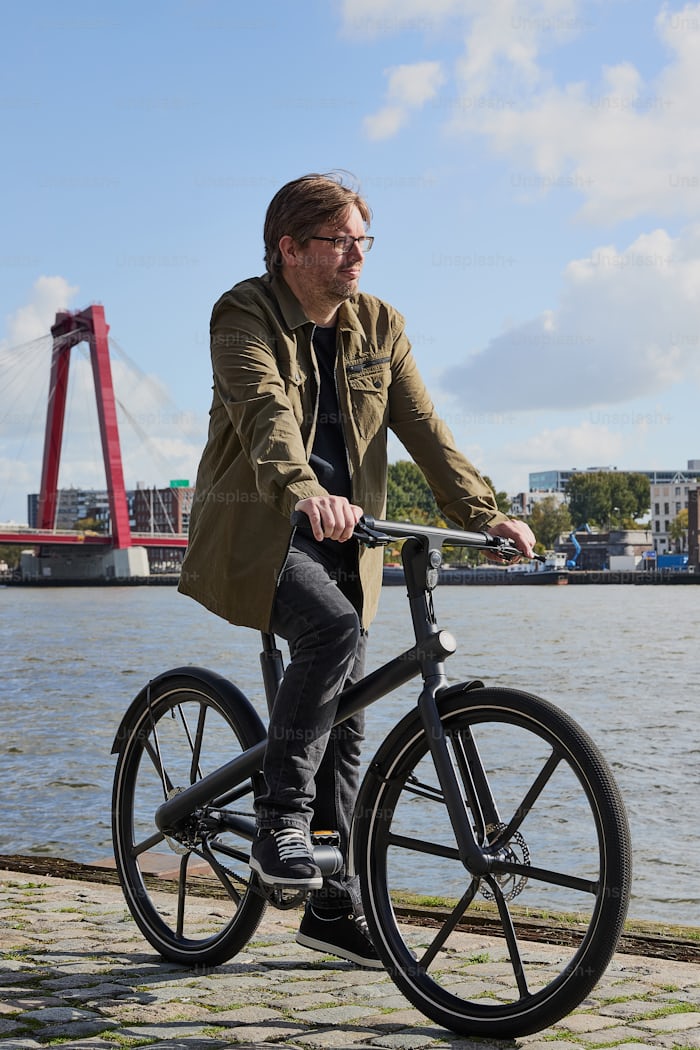Electric bikes, or e-bikes, are transforming the way we think about transportation. With a blend of human and electric power, e-bikes offer an innovative and eco-friendly solution to urban commuting challenges. This article explores the benefits, types, technology, and future potential of e-bikes, making a compelling case for why they are not just a trend but a significant shift in how we navigate our cities.
What are E-Bikes?
E-bikes are bicycles equipped with an integrated electric motor that assists the rider’s pedaling efforts. This motor can either complement the rider’s pedaling (pedal-assist) or provide a full throttle (throttle-assist), which propels the bike forward without pedaling. The amount of assistance and the top speed vary depending on the type and model of the e-bike, but most offer a seamless transition between motorized and manual power, allowing riders to adjust their experience based on their needs and preferences.
Types of E-Bikes
There are several types of e-bikes, each designed for different uses:
- Commuter E-Bikes: These are designed for daily urban commuting, featuring comfortable seating, a moderate range, and accessories like racks and fenders to accommodate work essentials.
- Mountain E-Bikes: Built for off-road adventures, mountain e-bikes come with robust frames, powerful motors, and long-lasting batteries to tackle steep hills and rugged terrain.
- Folding E-Bikes: Ideal for city dwellers with limited storage space, these compact e-bikes fold easily and are perfect for short commutes or combining with public transportation.
- Cargo E-Bikes: Designed to carry heavy loads, cargo e-bikes are equipped with sturdy frames and large storage compartments, making them ideal for grocery runs or small deliveries.
- Road E-Bikes: Similar to traditional road bikes, these e-bikes are built for speed and long-distance cycling on paved roads. They are lightweight and typically have narrow tires for reduced friction and increased speed.
The Benefits of E-Bikes
The growing popularity of e-bikes can be attributed to several key benefits that appeal to a broad range of users:
- Eco-Friendly Transportation: E-bikes are an environmentally friendly alternative to cars and motorcycles. They produce zero emissions and consume far less energy than traditional vehicles, making them a sustainable option for reducing one’s carbon footprint.
- Cost-Effective: The initial investment in an e-bike is lower than purchasing a car, and the ongoing costs for maintenance, fuel (electricity), and repairs are minimal. With rising fuel prices and increasing urban congestion, e-bikes offer a cost-effective solution for city commuting.
- Health Benefits: Unlike cars, e-bikes encourage physical activity. Even with motor assistance, riders still need to pedal, providing a moderate level of exercise that can improve cardiovascular health, increase stamina, and help with weight management.
- Convenience and Flexibility: E-bikes offer a flexible transportation option that can easily navigate through traffic and narrow streets. They also provide the ability to park almost anywhere, reducing the time spent searching for parking spaces.
- Accessibility: E-bikes make cycling accessible to a broader range of people, including those who may not be physically able to ride a traditional bike over long distances or up steep inclines. The electric assist feature allows riders to tackle challenging terrain and longer commutes without excessive strain.
The Technology Behind E-Bikes
E-bikes are powered by a combination of a battery, a motor, and a drivetrain that works together to provide propulsion and support. Here’s a breakdown of the main components:
- Battery: The battery is the heart of the e-bike, providing the power needed to operate the motor. Most e-bikes use lithium-ion batteries due to their high energy density, lightweight, and long lifespan. The battery capacity, typically measured in watt-hours (Wh), determines the range an e-bike can travel on a single charge.
- Motor: E-bikes use different types of motors, such as hub motors or mid-drive motors. Hub motors are located in the wheel and are simpler to maintain, while mid-drive motors are positioned near the crank and provide better balance and efficiency, especially on uneven terrain.
- Drivetrain: The drivetrain connects the motor to the wheels, allowing the e-bike to move. It includes components like the chain, gears, and derailleurs, which work together to convert the motor’s power into forward motion.
- Sensors and Controls: Modern e-bikes are equipped with sensors and controllers that manage the interaction between the motor, battery, and drivetrain. Sensors monitor the rider’s pedaling speed, torque, and cadence, adjusting the level of assistance accordingly to provide a smooth and natural riding experience.
Challenges and Considerations
While e-bikes offer numerous benefits, there are some challenges and considerations that potential users should keep in mind:
- Initial Cost: Although the cost of e-bikes has decreased over the years, they still represent a significant investment, especially for high-quality models with advanced features.
- Battery Life and Charging: The range of an e-bike is limited by its battery capacity, which can be a concern for longer commutes. Additionally, charging infrastructure is not as widespread as fuel stations, requiring riders to plan their trips and charging stops carefully.
- Regulations and Safety: Different regions have varying regulations regarding e-bike usage, including speed limits, helmet requirements, and where they can be ridden. It’s essential for riders to be aware of and comply with local laws to ensure safety and legality.
- Maintenance and Repairs: While e-bikes require less maintenance than cars, they do have specific components, like the motor and battery, that may need specialized care. Finding a qualified technician can sometimes be a challenge, depending on the region.
The Future of E-BikesThe Rise of E-Bikes: A Revolution in Urban MobilityThe Rise of E-Bikes: A Revolution in Urban Mobility

The future of e-bikes looks promising, with advancements in battery technology, materials, and smart features enhancing their appeal and functionality. Here are a few trends shaping the future of e-bikes:
- Improved Battery Technology: Ongoing research into battery technology is likely to result in lighter, more efficient, and longer-lasting batteries, increasing the range and reducing the charging time of e-bikes.
- Integration with Smart Technology: The integration of smart technology, such as GPS, fitness tracking, and anti-theft systems, is becoming more common in e-bikes, offering riders enhanced convenience, safety, and connectivity.
- Sustainable Urban Mobility: As cities continue to seek sustainable solutions to reduce congestion and pollution, e-bikes are poised to play a more significant role in urban transportation networks. Initiatives such as dedicated e-bike lanes, rental programs, and incentives for purchasing e-bikes are gaining traction worldwide.
- Expansion into New Markets: E-bikes are becoming increasingly popular in countries where cycling is not a traditional mode of transport. This expansion is driven by urbanization, the need for cost-effective transportation, and growing environmental awareness.
Conclusion
E-bikes represent a significant shift in urban mobility, offering a sustainable, efficient, and accessible alternative to traditional modes of transport. As technology continues to evolve and cities adapt to new transportation needs, e-bikes are set to become a central component of our daily commutes. Whether for commuting, fitness, or leisure, e-bikes provide a versatile solution that meets the diverse needs of modern urban dwellers. The future of transportation is electric, and e-bikes are leading the charge.





